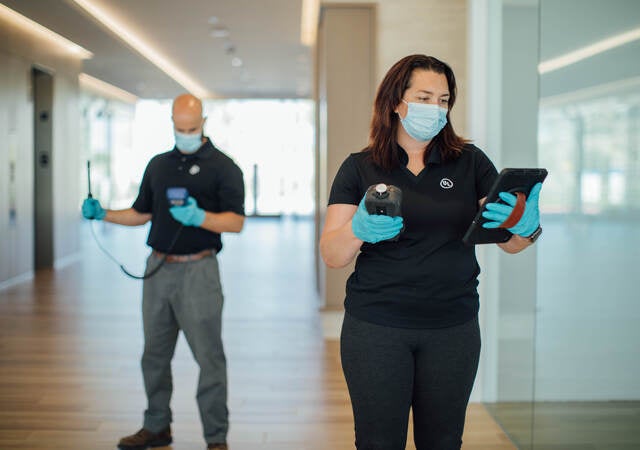Clean drinking water is essential. Thanks to modern water systems, it’s also something many people are fortunate to be able take for granted. However, the rapidity of the impact that the pandemic and the subsequent shuttering of many commercial buildings had on water quality surprised many. As people stayed at home, water no longer flowed regularly through commercial and corporate real estate buildings, which created unforeseen consequences for drinking water quality. Stagnant conditions reduced disinfection levels, which in turn allowed bacteria to thrive. In some buildings, stagnancy brought about water chemistry changes that increased turbidity, corrosion, and metal leaching.
How water is treated, distributed, stored and maintained affects water quality. People are now paying closer attention to water quality after the lessons learned in recent years.
Defining drinking water quality
Whether the water comes from a public water system or a private well, certain key metrics help define the purity and cleanliness of drinking water. Biological, chemical and physical factors and aesthetic properties factor into assessing drinking water quality.
In the United States (U.S.), the Environmental Protection Agency (EPA) regulates national health-based standards for drinking water. The organization divides these into primary and secondary standards. Primary standards are legally enforceable and driven by direct health impacts from pollutants like coliform bacteria, turbidity, lead, and copper. Even chlorine, a common and important disinfectant, must be carefully monitored to avoid the creation of disinfection byproducts that present health hazards. Secondary standards are non-enforceable and driven by aesthetic properties like taste, odor, and color.
Health impacts
Acute and chronic health effects can result from consuming contaminated water. For example, E. coli, a bacterium commonly found in wastewater and urban runoff, can cause stomach cramps, diarrhea, and vomiting, as can several parasites like giardia. Chronically elevated levels of lead in drinking water can cause systemic health problems. Lead is particularly dangerous to children, as they can undergo neurological development problems from long-term exposure.
The EPA regulates more than 90 water contaminants with properties ranging from physical to chemical, from microbiological to radioactive.
Preventive maintenance and water management
Though it undergoes testing to meet health standards, water from a municipality can undergo detrimental changes before it gets into your building and out of a tap. Upkeeping building water systems is an essential function of maintaining drinking water quality. While recommendations can vary by building type, design and age, general recommendations include:
- Inspect plumbing systems, especially any areas that have undergone renovation or construction. Note any capped pipes/dead legs that may foster the growth of bacteria.
- Maintain water treatment systems per the manufacturer’s directions, including point-of-entry or point-of-use filters and water softeners.
- Maintain hot water systems. Hot water heaters should be maintained between 120 and 140 degrees Fahrenheit (60 degrees Celsius) and serviced regularly.
- Flush the building regularly to help maintain disinfectant levels. Vacant floors and suites may require extra attention.
- Periodically test drinking water quality.
You can find additional resources for managing water systems at the Centers for Disease Control and Prevention (CDC) and EPA websites.
UL Verified Healthy Building Mark
The UL Solutions Verified Healthy Building Mark includes a drinking water component to monitor water conditions in your building. Samples are sent to our International Organization for Standardization (ISO)-accredited laboratory where we measure a variety of key metrics including microbes, metals and physical factors to compare to EPA drinking water standards.
When testing for the UL Verified Healthy Building Mark, our assessment looks into the best way to develop a water management plan for your site, whether your facility needs a plan for Legionella bacteria risk reduction and low occupancy procedures, testing of potable water systems to EPA primary standards or taking bacteria samples from high-risk assets.
Get connected with our sales team
Thanks for your interest in UL's products and services. Let's collect some information so we can connect you with the right person.




